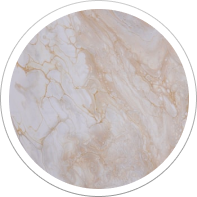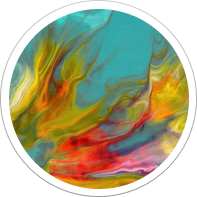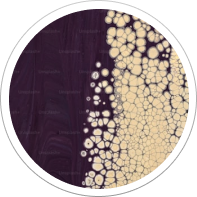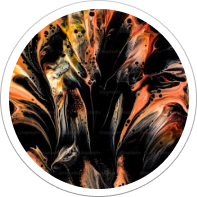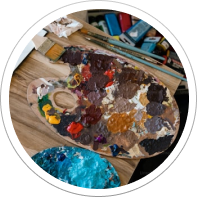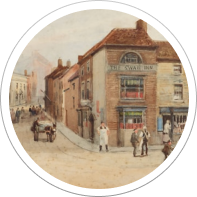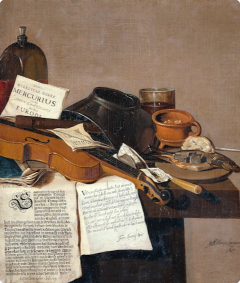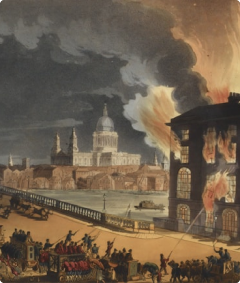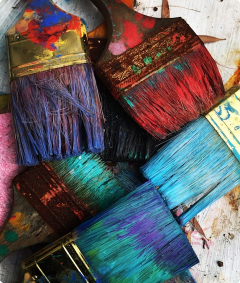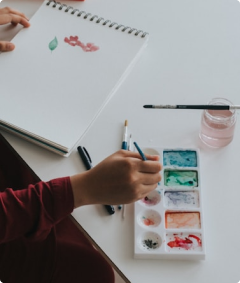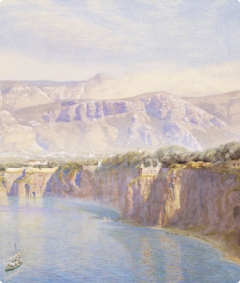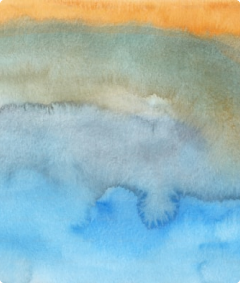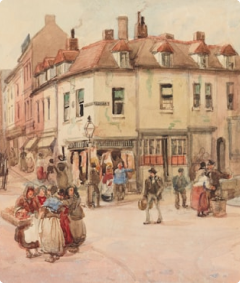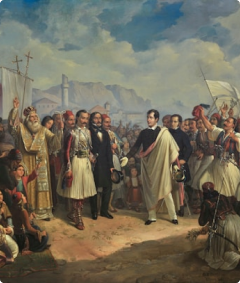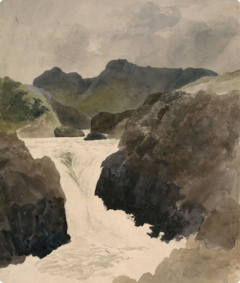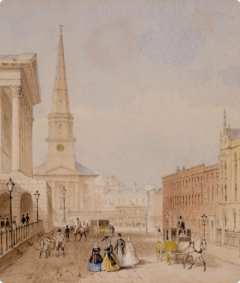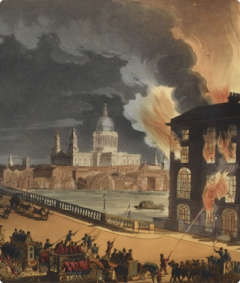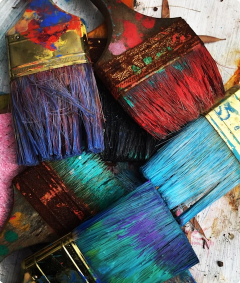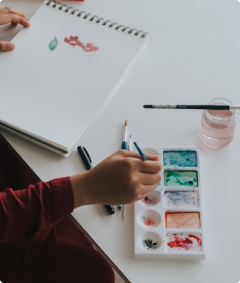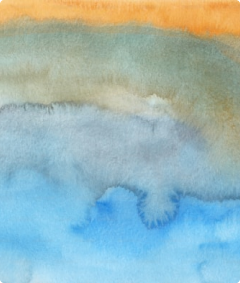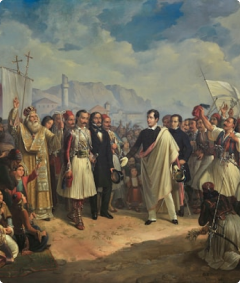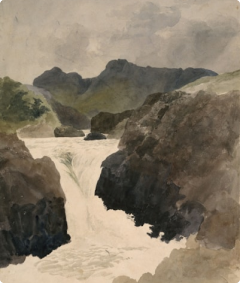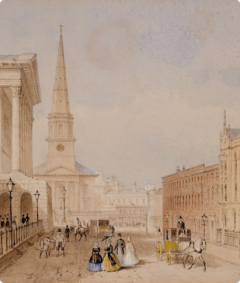
Top Seller
Canvas Prints & Photo Tiles, Wall Art from Jodello
Transform your space with Jodello’s canvas prints, photo tiles, and custom wall art. Turn memories and designs into stunning decor that reflects your unique style.
Get Started
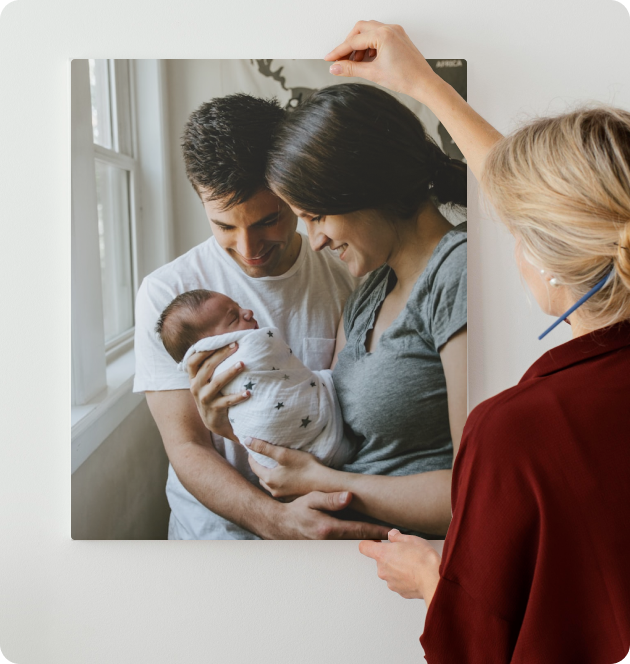






How It Works:
Transform your space with Jodello’s canvas prints, photo tiles, and custom wall art.

1. Add Photos
Upload your favorite moments.

2. We Deliver
Get your custom prints fast.

3. You Stick
Peel, stick, and transform your walls effortlessly.

Featured Categories
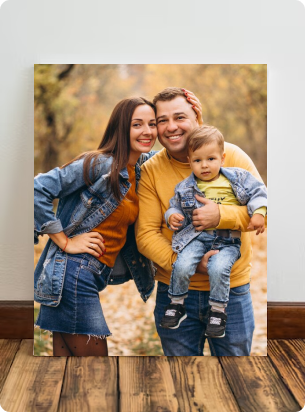
Your Cherished Moments, Beautifully Displayed
Transform your space with top-quality, customizable canvas prints. From cherished moments to stunning artwork, Jodello offers a seamless way to craft beautiful pieces that showcase your unique taste.
Get Started
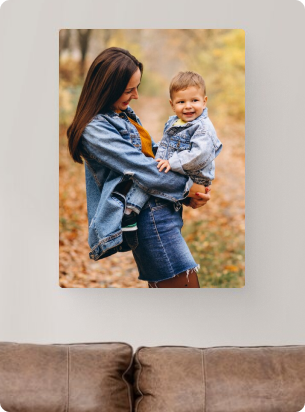
Why You'll Love Jodello

Seamless Installation
Easy-to-mount prints, no tools needed

No Damage, No Hassle
Sticks securely, removes cleanly

Endlessly Customizable
Designs that fit your style effortlessly
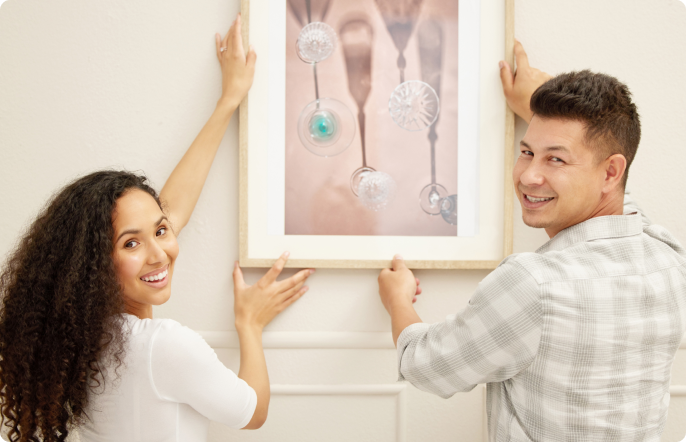
Customer Testimonials
Discover the conversations happening around our brand and see what our customers are saying about their experiences with us.
"I recently purchased a stunning canvas from Jodello, and I couldn't be happier with my choice! The vibrant colors and exquisite detail have truly transformed my living room. “


Liam Carter
"I recently purchased a stunning canvas from Jodello, and I couldn't be happier with my choice! The vibrant colors and exquisite detail have truly transformed my living room. “


Liam Carter
"I recently purchased a stunning canvas from Jodello, and I couldn't be happier with my choice! The vibrant colors and exquisite detail have truly transformed my living room. “


Liam Carter
FAQs
Easy-to-mount prints, no tools needed
Easy-to-mount prints, no tools needed
Easy-to-mount prints, no tools needed
Easy-to-mount prints, no tools needed
Easy-to-mount prints, no tools needed
Easy-to-mount prints, no tools needed
Easy-to-mount prints, no tools needed
Easy-to-mount prints, no tools needed
The Ultimate Guide to Best Canvas Art Prints for Wall Selection and Placement
Bare walls represent missed opportunities. They stand as silent witnesses to incomplete rooms, spaces that lack personality and warmth. Yet the solution remains refreshingly straightforward. A single exceptional piece of canvas wall art possesses the remarkable ability to revolutionize any room's atmosphere, infusing it with character, vibrancy, and personal expression without requiring extensive renovations or costly interior design consultations.
The contemporary homeowner faces an unprecedented array of choices when selecting wall art. Digital marketplaces overflow with options ranging from mass-produced prints to bespoke artistic creations. This abundance creates both excitement and paralysis, as individuals struggle to navigate through countless styles, sizes, and price points while seeking pieces that truly resonate with their aesthetic sensibilities.
Canvas art represents more than mere decoration; it serves as a reflection of personal taste, cultural appreciation, and lifestyle choices. Each piece selected communicates something profound about the inhabitant's personality, whether through bold abstract expressions, serene landscape photography, or minimalist line drawings that speak to contemporary sensibilities.
The transformation that occurs when thoughtfully chosen canvas art adorns previously empty walls extends beyond visual appeal. Rooms acquire depth, warmth, and sophistication that photographs alone cannot capture. Guests notice the difference immediately, commenting on how complete and intentional the space feels. This psychological impact creates lasting satisfaction for homeowners who invest time in selecting pieces that genuinely speak to their aesthetic preferences.
Modern manufacturing techniques have democratized access to high-quality canvas prints, making museum-worthy reproductions and original digital artworks accessible to broader audiences. Advanced printing technologies preserve color accuracy and detail integrity, ensuring that purchased pieces maintain their visual impact for years without fading or deterioration.
Mastering the Art of Personal Style Discovery
Identifying personal aesthetic preferences requires introspection and experimentation. Many individuals possess intuitive artistic leanings but struggle to articulate or recognize these inclinations when faced with purchasing decisions. The process of style discovery involves examining existing possessions, analyzing preferred color schemes, and considering emotional responses to various artistic movements.
Contemporary interior design embraces eclecticism, encouraging homeowners to blend influences from multiple periods and cultures. This freedom creates opportunities for creative expression while potentially overwhelming those seeking clear guidelines. Understanding personal style involves recognizing patterns in attraction to specific colors, textures, subjects, and compositional approaches.
Color psychology plays a significant role in art selection, as different hues evoke distinct emotional responses. Warm tones like terracotta, amber, and crimson create cozy, inviting atmospheres perfect for living rooms and dining areas. Cool blues, sage greens, and lavender promote tranquility and focus, making them ideal for bedrooms and home offices. Neutral palettes featuring charcoal, taupe, and cream provide versatile foundations that complement existing furnishings while maintaining sophistication.
Subject matter preferences often reflect personal experiences and aspirations. Nature enthusiasts gravitate toward botanical prints, landscape photography, and wildlife imagery that brings outdoor serenity indoors. Urban dwellers might prefer architectural photography, cityscape abstractions, or geometric patterns that echo metropolitan energy. Travel lovers often select pieces featuring iconic landmarks, cultural motifs, or maps that commemorate meaningful journeys.
Artistic movements offer additional frameworks for style exploration. Modernist influences emphasize clean lines, bold color blocks, and geometric forms that complement contemporary furniture. Impressionist-inspired pieces feature soft edges, natural light effects, and pastoral subjects that create romantic, dreamy atmospheres. Abstract expressionism provides emotional intensity through gestural brushstrokes and dynamic compositions that energize spaces.
Texture consideration extends beyond visual elements to include physical characteristics of canvas materials. Heavily textured pieces add dimensional interest, creating shadows and highlights that change throughout the day as natural light shifts. Smooth, flat surfaces provide clean, modern appearances that photograph beautifully for social media sharing. Mixed-media approaches combine various materials and techniques, resulting in unique pieces that become conversation starters.
Personal lifestyle factors influence optimal art selections. Families with young children might prioritize washable surfaces and avoid pieces with sharp edges or fragile frames. Pet owners should consider placement heights and durability when selecting canvas materials. Frequently hosted gatherings benefit from conversation-worthy pieces that spark discussions and create memorable impressions.
Budget considerations need not limit artistic ambitions. Quality canvas prints at various price points allow for gradual collection building over time. Starting with key focal pieces and expanding collections seasonally or annually provides ongoing excitement while spreading costs. Seasonal rotations also prevent visual fatigue and allow for experimentation with different styles and themes.
Strategic Placement for Maximum Visual Impact
Large-scale canvas art commands attention and establishes focal points within rooms. Strategic placement amplifies artistic impact while ensuring proportional harmony with existing architectural elements and furniture arrangements. Understanding spatial relationships prevents common mistakes that diminish artistic effectiveness.
The golden ratio principle applies beautifully to canvas art placement, creating visually pleasing proportions that feel naturally balanced. When positioning artwork above furniture, the bottom edge should sit approximately eight to ten inches above the piece below, creating breathing room while maintaining visual connection. This spacing prevents artwork from appearing disconnected or floating while ensuring adequate clearance for lamp placement or decorative objects.
Wall size determines optimal canvas dimensions through simple mathematical relationships. Large walls accommodate statement pieces measuring 40x60 inches or larger, while intimate spaces benefit from medium-sized works ranging from 16x20 to 24x36 inches. Multiple smaller pieces can create gallery walls, but careful planning prevents cluttered appearances that overwhelm rather than enhance.
Lighting considerations significantly impact artistic presentation. Natural light sources should complement rather than compete with artwork, avoiding direct sunlight that causes fading over time. Artificial lighting options include picture lights, track lighting, and strategically placed floor or table lamps that highlight artistic details without creating glare. LED options provide consistent color temperature while minimizing heat generation that could damage canvas materials.
Ceiling height influences vertical placement decisions. Standard eight-foot ceilings require careful positioning to avoid making rooms feel cramped, while higher ceilings offer opportunities for dramatic vertical compositions or multiple-level arrangements. The center of artwork should align with average eye level, typically 57 to 60 inches from floor to artwork center.
Furniture relationships create opportunities for harmonious compositions. Sofas, beds, and dining tables provide natural anchoring points for artwork placement. The visual weight of furniture should balance with artistic elements, preventing either from overwhelming the other. Heavy, dark furniture pairs beautifully with lighter, more delicate artwork, while sleek modern pieces complement bold, colorful canvas prints.
Traffic flow patterns within rooms affect both safety and visual enjoyment. Artwork should remain visible from primary seating areas while avoiding placement in high-traffic zones where it might be bumped or damaged. Corner locations often provide excellent viewing angles while protecting valuable pieces from accidental contact.
Seasonal considerations allow for rotating displays that maintain visual interest throughout the year. Spring collections might emphasize fresh greens and floral motifs, while autumn selections could feature warm oranges and gold tones. Winter displays often incorporate cooler blues and silvers, creating cozy contrast against darker days. Summer arrangements celebrate bright, energetic colors that reflect outdoor vitality.
Exploring Contemporary Artistic Movements and Trends
Abstract expressionism continues dominating contemporary canvas art markets, offering emotional depth and interpretive flexibility that appeals to diverse aesthetic preferences. These pieces provide viewers with opportunities for personal interpretation, creating different meanings and emotional responses based on individual experiences and moods. The movement's emphasis on spontaneous creation and emotional authenticity resonates with modern sensibilities that value authenticity over rigid conformity.
Minimalist design philosophy influences current artistic trends, emphasizing clean lines, negative space, and subtle color variations that complement contemporary interior design approaches. These pieces integrate seamlessly into modern homes while providing sophisticated focal points that enhance rather than overwhelm existing decor. The "less is more" philosophy creates timeless appeal that transcends temporary design fads.
Nature-inspired artwork reflects growing environmental consciousness and biophilic design principles that recognize humans' innate connection to natural elements. Botanical prints, landscape photography, and wildlife imagery bring outdoor tranquility indoors, creating restorative environments that promote wellbeing and stress reduction. These pieces particularly appeal to urban dwellers seeking natural balance in metropolitan settings.
Geometric patterns and mathematical precision create striking visual elements that appeal to analytical minds while providing structured beauty. These designs incorporate golden ratio principles, Fibonacci sequences, and other mathematical concepts that create inherently pleasing proportions. Sacred geometry motifs add spiritual dimensions to mathematical precision, creating pieces that satisfy both intellectual and emotional needs.
Cultural fusion represents another significant trend, as globalization enables artistic exchange between diverse traditions and contemporary expressions. Eastern calligraphy meets Western abstract techniques, African textile patterns inspire geometric compositions, and Indigenous art forms influence contemporary color palettes. These cross-cultural pollinations create unique pieces that celebrate human creativity across boundaries.
Digital art emergence has revolutionized canvas printing possibilities, enabling intricate details and color gradations previously impossible through traditional methods. Algorithm-generated patterns, fractal mathematics, and computer-assisted design create entirely new aesthetic categories that appeal to technology-conscious consumers. These pieces often incorporate interactive elements or augmented reality features for enhanced engagement.
Vintage revival movements resurrect classic artistic styles with contemporary updates. Mid-century modern influences return through atomic age patterns and space-age color schemes. Art deco geometries inspire bold, luxurious designs perfect for sophisticated entertaining spaces. Victorian botanical illustrations receive modern color treatments that maintain historical charm while fitting contemporary palettes.
Mixed media approaches combine traditional canvas printing with three-dimensional elements, metallic accents, or textural additions that create unique visual experiences. These pieces blur boundaries between painting, sculpture, and crafts, resulting in conversation-worthy installations that command attention while maintaining artistic integrity.
Creating Cohesive Color Schemes Throughout Your Home
Color coordination transforms collections of individual pieces into harmonious compositions that enhance rather than compete with existing interior design elements. Understanding color theory fundamentals enables confident decision-making when selecting multiple canvas pieces or coordinating artwork with furniture, textiles, and architectural features.
Monochromatic schemes utilize various shades, tints, and tones of single colors to create sophisticated, unified appearances. Navy blue artwork might incorporate powder blue accents, midnight navy depths, and steel blue highlights that provide visual interest while maintaining color family consistency. These approaches work particularly well in formal dining rooms, master bedrooms, and professional home offices where calm sophistication is desired.
Complementary color relationships create dynamic tensions that energize spaces through strategic contrast. Orange and blue combinations provide vibrant energy perfect for creative spaces, while red and green pairings offer classic elegance suitable for traditional settings. These high-contrast relationships require careful balance to avoid overwhelming effects, often incorporating neutral elements that provide visual rest areas.
Analogous color schemes feature neighboring colors on the color wheel, creating gentle transitions that feel naturally harmonious. Yellow-orange-red progressions evoke sunset warmth perfect for dining areas, while blue-green-purple combinations create cool tranquility ideal for bedrooms and meditation spaces. These relationships feel effortless and organic, making them excellent choices for those hesitant about bold color commitments.
Triadic color schemes employ three equally spaced colors on the color wheel, creating vibrant yet balanced compositions. Red-yellow-blue combinations channel primary color energy, while orange-green-purple arrangements offer sophisticated complexity. These schemes require thoughtful distribution to prevent any single color from dominating while ensuring each contributes to overall harmony.
Seasonal color progression allows for rotating displays that reflect changing natural cycles and personal moods. Spring palettes might emphasize fresh greens, soft pinks, and sky blues that celebrate renewal and growth. Summer collections could feature bright yellows, coral oranges, and turquoise blues that capture vacation energy. Autumn arrangements incorporate burnt oranges, deep reds, and golden yellows that reflect harvest abundance. Winter displays might emphasize cool blues, pristine whites, and metallic silvers that echo crisp winter beauty.
Neutral foundations provide versatile backdrops that accommodate changing accent colors and seasonal decorations. Charcoal, taupe, cream, and warm white canvases create sophisticated bases that work with virtually any color scheme while maintaining timeless appeal. These pieces prove particularly valuable for rental properties or frequently redecorated spaces where permanent color commitments feel restrictive.
Metallic accents add luxury and sophistication to color schemes through gold, silver, copper, or bronze elements that catch and reflect light dynamically. These accents work particularly well in evening lighting situations where artificial illumination creates beautiful interplay between metallic surfaces and surrounding colors. Metallic elements also bridge gaps between different color families, creating cohesion in eclectic collections.
Understanding Canvas Materials and Printing Quality
Canvas material quality directly impacts longevity, appearance, and value of purchased artwork. Cotton canvas provides excellent color absorption and durability while maintaining cost-effectiveness for most residential applications. The natural fiber structure accepts inks beautifully, creating rich, saturated colors that maintain vibrancy over extended periods. Cotton's flexibility prevents cracking during temperature fluctuations while supporting various textures from smooth to heavily textured surfaces.
Polyester canvas alternatives offer enhanced durability and moisture resistance, making them ideal for humid environments like bathrooms or coastal homes where salt air might affect natural fibers. These synthetic materials resist fading from ultraviolet exposure while maintaining dimensional stability in varying climatic conditions. The synthetic structure provides consistent printing surfaces that ensure uniform color distribution and sharp detail reproduction.
Blend materials combine cotton and polyester advantages, creating hybrid canvases that balance natural aesthetics with synthetic durability. These materials often provide optimal cost-to-performance ratios while satisfying both traditional preferences and practical requirements. The combination typically results in enhanced color reproduction capabilities while maintaining natural texture characteristics that distinguish canvas from paper alternatives.
Weight measurements indicate canvas thickness and durability, with heavier weights generally providing superior longevity and professional appearance. Standard residential applications typically utilize 340gsm to 400gsm weights that provide adequate durability without excessive cost. Heavier weights offer enhanced texture and premium feel but may require specialized hanging hardware due to increased weight considerations.
Stretching quality affects both immediate appearance and long-term durability of canvas prints. Proper stretching eliminates wrinkles, maintains consistent tension across the surface, and prevents sagging over time. Gallery-wrapped edges create clean, finished appearances that eliminate frame requirements while providing modern aesthetic appeal. Museum-quality stretching techniques ensure artwork maintains professional appearance for decades with minimal maintenance.
Coating applications protect printed surfaces from environmental factors while enhancing color vibrancy and detail clarity. Protective coatings shield artwork from dust accumulation, minor moisture exposure, and ultraviolet degradation that gradually diminishes color intensity. These treatments also facilitate cleaning and maintenance while preserving investment value through extended functional lifespan.
Printing technology advancements enable unprecedented detail reproduction and color accuracy that rival original artistic techniques. Giclée printing processes utilize archival inks and precision application methods that create museum-quality reproductions suitable for serious collectors. These techniques ensure color stability, detail clarity, and overall artistic integrity that justifies investment in quality pieces.
Edge finishing options provide choices between gallery wrapping, museum mounting, and traditional framing preparations. Gallery wrapping extends printed images around canvas edges, creating seamless appearances perfect for contemporary settings. Museum mounting provides neutral edge treatments that accommodate future framing decisions. Traditional preparations include white or black edges designed specifically for frame presentation.
Room-Specific Selection Strategies for Different Living Spaces
Living room canvas selections require consideration of social functions, lighting conditions, and furniture arrangements that influence both artwork visibility and guest experiences. These communal spaces benefit from pieces that encourage conversation while complementing existing color schemes and architectural features. Scale becomes particularly important in living rooms, where oversized pieces create dramatic focal points while smaller collections might disappear against large furniture arrangements.
Seating arrangements dictate optimal viewing angles and placement heights for maximum enjoyment during typical activities like entertaining, reading, or watching television. Artwork positioned above sofas should maintain proper proportional relationships while remaining visible from various seating positions throughout the room. Corner locations often provide excellent display opportunities while protecting valuable pieces from high-traffic areas where accidental damage might occur.
Natural light availability in living rooms affects color selection and placement decisions significantly. South-facing windows provide abundant illumination that enhances warm color palettes while potentially causing fading if protective measures aren't implemented. North-facing exposures offer consistent, cool light that flatters cooler color schemes while requiring artificial supplementation during evening hours. East and west orientations create dramatic lighting changes throughout the day that can enhance or diminish artwork depending on viewing times.
Bedroom canvas art serves different purposes than public spaces, focusing on personal preferences, relaxation promotion, and intimate atmosphere creation. These private sanctuaries allow for more personal artistic expressions that might feel too vulnerable for public display. Color selections often emphasize calming palettes that promote restful sleep while reflecting individual personality and relationship dynamics.
Size considerations in bedrooms typically favor medium to large pieces that provide visual interest without overwhelming intimate spaces. Headboard wall placement offers natural focal opportunities while maintaining comfortable viewing from bed positions. Side wall locations work well for additional pieces that create gallery-like collections without competing with primary headboard artwork.
Personal meaning takes precedence in bedroom selections, as these spaces house artwork viewed daily during vulnerable moments. Travel photography, family portraits transformed into artistic presentations, or abstract pieces that evoke positive memories create personalized environments that support emotional wellbeing and personal reflection.
Kitchen and dining room selections must balance aesthetic appeal with practical considerations related to cooking activities, food service, and frequent cleaning requirements. Steam, grease, and food particles create challenging environments for artwork preservation, requiring protective coatings or strategic placement away from primary cooking areas.
Food-related imagery often works beautifully in dining spaces, from elegant still life compositions to abstract interpretations of culinary themes. Vintage advertising posters, herb and spice illustrations, or wine country landscapes create appetizing atmospheres that enhance dining experiences. However, overly literal food representations might clash with actual meal presentations or create unwanted psychological associations.
Color selections in food preparation areas should complement rather than compete with natural food colors. Neutral backgrounds allow colorful ingredients and prepared dishes to shine while providing visual rest areas that prevent sensory overload. Warm earth tones often work beautifully, creating cozy atmospheres that encourage lingering over meals and conversations.
Home office spaces require artwork that inspires productivity while maintaining professional appearance for video conferences and client meetings. Abstract pieces that suggest movement and energy can boost motivation without creating distractions during focused work periods. Inspirational landscapes might provide mental escape opportunities during stressful moments while maintaining sophisticated appearances suitable for professional environments.
Productivity research suggests that certain color combinations and compositional elements can enhance focus and creativity. Blue tones promote calm concentration ideal for analytical tasks, while green elements reduce eye strain during extended computer use. Warm accents in orange or yellow can boost energy levels during afternoon productivity dips.
Professional considerations become important for individuals who conduct business meetings or client consultations from home offices. Artwork backgrounds should appear purposeful and tasteful without revealing excessive personal information or creating distracting elements during important conversations. Neutral abstracts or landscape photography often provide ideal backgrounds that enhance professional credibility.
Bathroom canvas selections face unique challenges related to humidity, steam, and frequent temperature fluctuations that can damage untreated materials. Moisture-resistant coatings and proper ventilation become essential for artwork preservation in these environments. However, well-chosen pieces can transform utilitarian spaces into spa-like retreats that enhance daily routines.
Spa-inspired themes work particularly well in bathroom settings, featuring calm water imagery, zen-inspired abstracts, or botanical prints that promote relaxation and self-care. Coastal themes with seashells, driftwood, or ocean scenes create resort-like atmospheres perfect for unwinding after stressful days. Minimalist approaches often work best, avoiding cluttered compositions that might feel overwhelming in smaller spaces.
Size and Proportion Guidelines for Perfect Visual Balance
Proportional relationships between artwork and surrounding elements determine visual success or failure more than any other single factor. Mathematical principles governing these relationships transcend personal taste, creating universal guidelines that ensure pleasing compositions regardless of artistic style or individual preferences.
The two-thirds rule provides reliable guidance for artwork sizing relative to furniture pieces. Canvas width should measure approximately sixty-six percent of the furniture width below it, creating proportional balance that feels neither overwhelmed nor underwhelming. A six-foot sofa pairs beautifully with 48-inch wide artwork, while a four-foot console table works well with 32-inch pieces.
Vertical proportions require equal consideration, particularly in rooms with varying ceiling heights. Standard eight-foot ceilings accommodate 24 to 30-inch tall pieces comfortably, while higher ceilings can support taller artwork that maintains proportional relationships with room scale. Horizontal orientations often work better in contemporary settings, while vertical pieces can enhance traditional room proportions.
Gallery wall arrangements offer opportunities for creative composition using multiple pieces in coordinated displays. These installations require careful planning to achieve cohesive appearances that enhance rather than overwhelm surrounding spaces. Template layouts help visualize arrangements before committing to wall placements, preventing expensive mistakes and minimizing wall damage from multiple hanging attempts.
Spacing between multiple pieces follows specific guidelines that create unity while allowing individual pieces to maintain distinct identities. Two to three inches between pieces in tight groupings creates intimate collections, while four to six inches provides breathing room for larger compositions. Maintaining consistent spacing throughout arrangements creates professional appearances that rival gallery presentations.
Asymmetrical arrangements often feel more dynamic and interesting than rigidly symmetrical displays, reflecting contemporary design preferences for organic, lived-in aesthetics. These compositions require careful weight distribution to maintain visual balance while creating movement and flow that guides eye movement throughout the arrangement.
Scale relationships extend beyond immediate artwork to include architectural elements like windows, doors, and built-in features that influence perceived proportions. Large windows might dwarf medium-sized artwork, while small pieces can appear lost on expansive walls without supportive elements. Understanding these relationships enables confident selection decisions that enhance rather than compete with architectural features.
Multiple room coordination requires considering how artwork selections influence overall home aesthetics and flow between spaces. Consistent style elements create cohesive experiences as individuals move through different areas, while contrasting elements can define distinct purposes and moods for various rooms.
Budget-Conscious Strategies for Building Art Collections
Quality canvas art need not strain household budgets when approached strategically with long-term vision and careful planning. Investment thinking replaces impulse purchasing, focusing on pieces that provide lasting satisfaction while maintaining or increasing value over time. This approach enables gradual collection building that creates meaningful personal galleries without financial stress.
Seasonal sales cycles provide opportunities for substantial savings on quality pieces from reputable sources. Post-holiday clearances often feature exceptional values on gift-quality artwork, while end-of-summer sales might offer outdoor-themed pieces at reduced prices. Understanding these cycles enables strategic purchasing that maximizes value while building desired collections systematically.
Print-on-demand services have democratized access to affordable, high-quality canvas art by eliminating inventory costs and enabling competitive pricing. These services often feature work from independent artists and designers who receive fair compensation while offering consumers unique pieces unavailable through traditional retail channels. Quality varies significantly among providers, making research and sample evaluation essential before major purchases.
Subscription services and art rental programs provide alternatives to outright purchasing that enable regular rotation and experimentation with different styles. These options work particularly well for individuals unsure about long-term commitments or those who enjoy frequently changing decor. Some programs offer purchase options for favored pieces after extended trial periods.
Local artist support creates opportunities for acquiring original or limited-edition pieces while supporting community creative economies. Farmer's markets, art fairs, and studio tours often feature emerging talents whose work offers exceptional value compared to established gallery prices. Building relationships with local artists can lead to commissioned pieces that perfectly match specific needs and preferences.
Thrift store and consignment discoveries occasionally yield remarkable finds at fraction of retail prices. Estate sales and moving sales sometimes feature quality pieces from previous collectors who invested in good artwork. These treasure hunts require patience and developed eye for quality but can result in exceptional additions to personal collections.
Group purchasing arrangements among friends or family members can reduce individual costs while enabling access to higher-quality pieces than individual budgets might allow. Timeshare approaches to expensive artwork allow multiple households to enjoy rotating displays of museum-quality pieces that would otherwise remain financially inaccessible.
Investment potential should factor into purchasing decisions for higher-end pieces, particularly those from emerging artists or limited-edition collections. While not all artwork appreciates in value, understanding market trends and artist development can inform decisions that provide both aesthetic pleasure and potential financial returns.
Professional Hanging and Display Techniques
Proper hanging techniques ensure artwork safety while achieving professional presentation standards that enhance overall visual impact. Wall material analysis determines appropriate hardware selection, weight distribution methods, and installation procedures that prevent damage to both walls and valuable artwork.
Stud location becomes critical for heavy pieces or multiple-piece installations that exceed standard hanging weight limits. Electronic stud finders provide accurate identification, while traditional knocking methods offer backup verification. Hollow wall installations require specialized anchors rated for specific weight loads to prevent catastrophic failures that damage both artwork and surrounding wall surfaces.
Hanging hardware selection impacts both security and aesthetic presentation. Picture wire provides flexibility for position adjustments while distributing weight across canvas stretcher frames. Sawtooth hangers offer clean, minimal profiles but limit position adjustment capabilities. French cleat systems provide maximum security for valuable pieces while enabling easy removal for cleaning or relocation.
Leveling accuracy prevents crooked presentations that undermine professional appearances regardless of artwork quality. Digital levels provide precision measurements, while traditional bubble levels offer reliable alternatives. Measuring tape ensures consistent positioning when hanging multiple pieces in coordinated arrangements.
Template creation simplifies complex installations while minimizing wall damage from repeated positioning attempts. Paper templates enable visualization of final arrangements before committing to permanent placement. These planning tools prove particularly valuable for gallery walls or room arrangements involving multiple pieces with specific spacing requirements.
Wall marking techniques preserve surface integrity while ensuring accurate placement. Painters tape provides removable marking options that prevent paint damage during installation processes. Pencil marks should remain light and erasable to avoid permanent marking of wall surfaces around artwork edges.
Protection measures during installation prevent accidental damage to both artwork and surrounding surfaces. Drop cloths protect flooring from falling hardware or tools, while cardboard backing prevents wall scratches during position adjustments. Gloves protect canvas surfaces from oil transfer and fingerprints that might compromise long-term appearance.
Weight distribution calculations ensure safe hanging loads that prevent hardware failure or wall damage over time. Maximum weight ratings for hanging hardware should exceed actual artwork weight by comfortable margins that account for dynamic loads from door closing, foot traffic vibrations, or accidental contact.
Long-term Care and Preservation Strategies
Canvas artwork preservation requires understanding environmental factors that influence longevity and implementing protective measures that maintain original appearance and value over extended periods. Proper care ensures that quality investments continue providing aesthetic pleasure for decades while maintaining potential resale value.
Dust accumulation represents the most common threat to canvas artwork, gradually diminishing color vibrancy and detail clarity through particle buildup on surface textures. Regular maintenance prevents accumulation that becomes increasingly difficult to remove over time. Gentle dusting with clean, dry microfiber cloths removes surface particles without introducing moisture or chemicals that might affect ink or canvas materials.
Humidity control prevents dimensional changes in canvas materials that can cause warping, sagging, or stretcher frame stress that compromises artwork integrity. Ideal humidity levels range from thirty to fifty percent, achievable through dehumidifiers in humid climates or humidifiers in arid regions. Rapid humidity fluctuations prove more damaging than consistent levels outside optimal ranges.
Temperature stability complements humidity control in creating favorable preservation environments. Extreme temperatures or rapid fluctuations can cause canvas expansion and contraction that stresses mounting systems and printing surfaces. Avoiding placement near heating vents, air conditioning units, or frequently opened exterior doors helps maintain stable conditions.
Ultraviolet protection prevents gradual color fading that diminishes artwork value and visual impact over time. Window treatments, UV-filtering films, or specialized lighting help control exposure while maintaining adequate illumination for enjoyment. Even indirect sunlight contains sufficient UV radiation to cause noticeable fading in unprotected pieces over several years.
Professional cleaning services provide periodic deep maintenance that exceeds capabilities of routine home care. These specialists possess appropriate equipment and expertise to address specific material requirements while avoiding damage from inappropriate cleaning methods. Annual or bi-annual professional attention can significantly extend artwork lifespan while maintaining original appearance.
Storage considerations become important for pieces displayed seasonally or during renovations. Proper storage prevents damage from improper stacking, moisture exposure, or temperature extremes that can permanently compromise canvas integrity. Acid-free materials and controlled environments protect valuable pieces during extended storage periods.
Insurance evaluation ensures adequate protection for valuable collections that might require special coverage beyond standard homeowner's policies. Documentation through professional photography and written appraisals provides necessary information for coverage determination and potential claim situations. Regular valuation updates account for appreciation or market changes that affect replacement costs.
Rotation schedules prevent overexposure while enabling enjoyment of larger collections within limited display space. Seasonal rotations maintain visual interest while providing rest periods that extend artwork lifespan. Careful handling during rotation changes prevents damage while enabling fresh presentations that prevent visual fatigue.
Emerging Trends and Future Directions in Canvas Art
Sustainability consciousness increasingly influences canvas art selection as environmentally aware consumers seek eco-friendly alternatives that align with personal values. Recycled materials, renewable resources, and carbon-neutral production methods appeal to conscious consumers willing to invest in responsible artistic choices. These considerations often influence purchasing decisions as much as aesthetic preferences.
Biodegradable inks and sustainable canvas materials reduce environmental impact while maintaining quality standards that satisfy discriminating buyers. Water-based printing processes eliminate harmful solvents while producing vibrant colors that rival traditional chemical methods. These developments enable guilt-free artistic enjoyment for environmentally conscious consumers.
Local production emphasis reduces transportation emissions while supporting regional creative economies and ensuring faster delivery times. Regional artists and manufacturers often provide unique perspectives and styles unavailable through mass production channels. This localized approach creates opportunities for discovering emerging talents while supporting community development.
Digital integration capabilities enable interactive artwork experiences that respond to environmental changes, user presence, or mobile device inputs. These pieces might subtly shift colors throughout the day, display different images based on weather conditions, or provide information overlay through augmented reality applications. Technology integration creates dynamic experiences that evolve with user preferences and external conditions.
Smart home compatibility allows artwork to coordinate with lighting systems, music preferences, or daily routines through automated responses. Morning routines might trigger energizing color displays, while evening settings could shift toward calming palettes that promote relaxation. These integrations create personalized environments that adapt to lifestyle patterns and preferences.
Augmented reality applications enable virtual artwork preview before purchasing, allowing consumers to visualize pieces within their actual rooms using smartphone cameras. These tools reduce uncertainty about size, color, and style compatibility while enabling confident purchasing decisions. Virtual reality showrooms provide immersive shopping experiences that replicate gallery browsing from home comfort.
Blockchain verification systems ensure artwork authenticity and provenance tracking for digital art pieces and limited-edition prints. These technologies provide collectors with verified ownership records and authenticity guarantees that protect investment value while preventing fraudulent reproductions. Smart contracts can automate royalty payments to artists for secondary sales.
Artificial intelligence influences both artistic creation and recommendation systems that help consumers discover pieces matching their preferences. Machine learning algorithms analyze browsing patterns, purchase histories, and style preferences to suggest artwork that aligns with individual tastes. AI-generated art creates entirely new categories of affordable, unique pieces that appeal to technology-enthusiastic consumers.
Professional Interior Design Principles for Art Integration
Professional interior designers employ sophisticated strategies for artwork integration that create cohesive, magazine-worthy spaces through careful attention to proportion, color theory, and functional requirements. Understanding these principles enables homeowners to achieve professional results without expensive consultation fees.
Visual weight distribution requires balancing artwork impact with furniture mass, architectural features, and room proportions to create harmonious compositions. Heavy, dark pieces require lighter surrounding elements for balance, while delicate artwork might need supportive elements that prevent them from appearing insignificant. This balance creation involves considering both physical and perceived weight relationships.
Focal point hierarchy establishes primary and secondary attention areas within rooms, preventing visual competition between elements while ensuring important features receive appropriate emphasis. Artwork often serves as primary focal points, but architectural features like fireplaces or large windows might command attention that influences art placement decisions.
Traffic flow patterns affect both artwork safety and viewing experiences as people move through spaces during daily activities. High-traffic areas require durable pieces positioned above potential contact zones, while intimate viewing areas can accommodate delicate or detailed works that reward close examination. Understanding movement patterns prevents placement mistakes that compromise both artwork and user safety.
Scale progression creates dynamic visual experiences through varied artwork sizes that guide eye movement and create rhythm within spaces. Graduated sizing from large statement pieces to medium supporting works and small accent pieces creates sophisticated compositions that maintain interest while avoiding monotony. This progression technique appears throughout professional design magazines and high-end residential projects.
Style bridging techniques enable successful combination of different artistic movements and periods within single spaces without creating chaotic or conflicted appearances. Transitional pieces that share color elements, compositional approaches, or thematic connections help diverse artworks coexist harmoniously while maintaining individual character and appeal.
Layering strategies incorporate artwork with other decorative elements like mirrors, sculptural objects, and functional items to create rich, complex compositions that reward extended viewing. These approaches require careful balance to avoid cluttered appearances while achieving sufficient visual interest that prevents spaces from feeling sparse or unfinished.
Color temperature coordination ensures that artificial lighting enhances rather than distorts artwork colors, particularly important for pieces featuring subtle color variations or mixed media elements. Warm white LEDs complement most artwork while providing consistent illumination that doesn't shift throughout the day like natural light sources.
Maintenance accessibility considerations ensure that cleaning, adjustment, and preservation activities can be performed safely without requiring professional assistance or specialized equipment. Reasonable heights, sturdy hanging systems, and accessible locations enable proper care while protecting valuable investments from neglect due to maintenance difficulties.
Understanding Canvas Art Selection Fundamentals
The world of canvas art selection encompasses far more than simply choosing attractive imagery for wall decoration. Contemporary homeowners find themselves navigating an intricate landscape of artistic possibilities, where personal expression merges seamlessly with interior design principles to create environments that truly reflect individual personality while maintaining sophisticated appeal. The process begins with understanding fundamental concepts that distinguish exceptional artwork from merely decorative pieces.
Canvas art represents a distinctive medium that offers unparalleled versatility in home enhancement projects. Unlike traditional framed prints or photographic displays, canvas pieces provide texture, depth, and dimensional quality that transforms ordinary wall spaces into focal points of visual interest. The fabric surface absorbs and reflects light differently than paper or glass, creating subtle variations in appearance throughout the day as natural illumination shifts and artificial lighting creates new atmospheric conditions.
Quality canvas construction utilizes heavyweight cotton or linen materials that provide durability and longevity impossible to achieve with lesser alternatives. Premium canvases resist warping, sagging, and color degradation over extended periods, ensuring investments retain both aesthetic appeal and monetary value. The stretching process requires precision and expertise to achieve proper tension that prevents wrinkles while maintaining structural integrity under varying environmental conditions.
Professional-grade inks and pigments used in high-quality reproductions undergo rigorous testing to ensure lightfastness and color stability. These formulations resist fading even when exposed to direct sunlight, making them suitable for placement in bright rooms or areas with significant natural light exposure. Understanding these technical aspects empowers purchasers to make informed decisions that prevent disappointment and ensure lasting satisfaction with their artistic investments.
Contemporary printing techniques have revolutionized canvas art production, enabling reproduction of original masterpieces with unprecedented accuracy and detail. Giclée printing processes utilize multiple ink cartridges to achieve color gamuts that closely match original artwork, while advanced paper and canvas substrates provide surfaces that mimic traditional painting textures. These advances democratize access to museum-quality reproductions at accessible price points.
The selection process benefits from systematic evaluation of multiple factors including room dimensions, existing furnishings, color schemes, and intended atmospheric effects. Successful artwork placement requires understanding how pieces interact with their surroundings rather than viewing them as isolated decorative elements. This holistic approach ensures cohesive design results that enhance rather than compete with existing interior elements.
Size considerations extend beyond simple proportional calculations to include viewing distances, ceiling heights, and furniture arrangements that influence how artwork appears within specific spaces. Oversized pieces can overwhelm intimate settings while undersized selections may appear insignificant in expansive rooms. Achieving proper scale requires careful measurement and visualization techniques that account for all relevant spatial relationships.
Color harmony represents another crucial element in successful canvas art selection. Understanding how artwork hues interact with wall colors, fabric choices, and lighting conditions prevents clashing combinations while creating opportunities for sophisticated color relationships that enhance overall room aesthetics. This involves considering both dominant colors and subtle accent tones that may become more prominent under certain lighting conditions.
Subject matter selection reflects personal taste while considering the intended purpose and atmosphere of specific rooms. Abstract compositions offer versatility and timeless appeal, while representational imagery provides focal points and conversation starters. The choice between these approaches depends on individual preferences, existing decor themes, and long-term decorating goals that may evolve over time.
Frame alternatives for canvas art include traditional wooden frames, floating frames that create shadow effects, and frameless gallery wraps that emphasize the artwork itself. Each approach creates different visual impacts and serves varying aesthetic purposes. Gallery wraps offer contemporary appeal and cost-effectiveness, while framed presentations provide formal elegance and protection for canvas edges.
Investment considerations encompass both immediate purchase costs and long-term value retention. Quality pieces from recognized artists or publishers often appreciate over time, making them sound financial choices beyond their decorative value. However, personal satisfaction and daily enjoyment should remain primary factors in selection decisions, as artwork serves primarily aesthetic rather than investment purposes for most homeowners.
Transforming Living Spaces Through Strategic Placement
The art of strategic placement transforms ordinary rooms into extraordinary living environments that reflect sophisticated design sensibilities while maintaining functional practicality. Successful canvas art positioning requires understanding how human visual perception interacts with spatial arrangements to create focal points, guide traffic flow, and establish atmospheric moods that enhance daily living experiences.
Wall space analysis begins with identifying primary viewing areas where occupants spend significant time. These locations typically include seating areas, dining spaces, and transitional zones where people naturally pause or gather. Artwork positioned in these strategic locations receives maximum attention while contributing meaningfully to room atmospheres rather than functioning as mere decoration.
Height placement follows established guidelines while accommodating specific room characteristics and viewer preferences. The standard recommendation positions artwork centers approximately fifty-seven inches from floor level, corresponding to average adult eye height. However, this measurement requires adjustment for seating areas where viewers typically observe from lower perspectives, and in rooms with unusually high or low ceilings that affect visual proportions.
Lighting considerations significantly impact artwork appearance and should influence both selection and placement decisions. Natural light sources create dynamic viewing conditions that change throughout the day, potentially revealing different aspects of artwork at various times. Artificial lighting systems offer consistent illumination while providing opportunities for dramatic effects through accent lighting, track systems, or picture lights that highlight specific pieces.
Multiple piece arrangements require careful planning to achieve visual balance while avoiding cluttered appearances. Gallery wall concepts utilize collections of related pieces to create impactful displays that fill large wall spaces effectively. These arrangements benefit from paper templates that allow experimentation with different configurations before committing to permanent placement, preventing damage to walls and artwork during the planning process.
Room function influences appropriate artwork choices and placement strategies. Private spaces like bedrooms allow for more personal or intimate subject matter, while public areas benefit from broadly appealing imagery that creates welcoming atmospheres for guests. Functional considerations include moisture resistance for bathroom placement and heat tolerance for locations near fireplaces or heating systems.
Traffic flow patterns affect artwork visibility and should inform placement decisions to ensure pieces receive appropriate attention without interfering with room functionality. Narrow hallways benefit from linear arrangements that guide movement, while open floor plans offer opportunities for dramatic statement pieces that serve as room anchors or division elements between functional areas.
Furniture relationships require coordination to achieve harmonious compositions that enhance rather than compete with existing furnishings. Artwork positioned above sofas, dining tables, or console pieces should complement these elements while maintaining appropriate proportional relationships. The interplay between horizontal furniture lines and vertical artwork orientations creates dynamic visual interest when properly balanced.
Color coordination extends beyond matching existing schemes to include strategic use of contrasting or complementary colors that add visual excitement while maintaining overall harmony. Monochromatic approaches create sophisticated, calming effects, while bold color contrasts generate energy and focal emphasis. Understanding color theory principles enables confident decision-making that achieves desired atmospheric effects.
Seasonal considerations allow for artwork rotation that maintains fresh appearances throughout the year. Some homeowners develop collections that enable periodic changes reflecting seasonal moods or special occasions. This approach requires planning for storage and handling procedures that protect pieces during rotation periods while ensuring easy access for regular changes.
Scale relationships encompass more than simple size matching to include visual weight considerations that affect how pieces appear within their environments. Dark or heavily detailed artwork carries more visual weight than light or simple compositions, requiring adjustment of placement and surrounding elements to maintain balance. Understanding these principles prevents overwhelming or underwhelming effects that diminish overall room aesthetics.
Professional consultation services provide expertise for complex placement challenges or valuable collections that require specialized handling. These specialists possess knowledge of architectural principles, lighting design, and conservation practices that ensure optimal presentation while protecting valuable pieces from environmental damage or security risks.
Exploring Diverse Artistic Styles and Themes
The contemporary canvas art marketplace encompasses an extraordinary diversity of artistic expressions, ranging from classical reproductions to cutting-edge contemporary creations that push boundaries of traditional artistic conventions. Understanding various stylistic categories empowers collectors to make informed choices that align with personal aesthetics while considering long-term satisfaction and versatility within evolving interior design schemes.
Abstract expressionism continues to captivate homeowners seeking sophisticated wall art that complements modern interior design philosophies without imposing specific narrative or representational constraints. These compositions utilize color, form, and texture to create emotional responses rather than depicting recognizable subjects, offering remarkable versatility in diverse decorating contexts. The non-representational nature allows viewers to discover personal interpretations that may evolve over time, ensuring lasting engagement with the artwork.
Contemporary abstract pieces often incorporate mixed media elements, metallic accents, or dimensional components that add physical texture and visual depth beyond traditional flat painting surfaces. These innovations create interactive viewing experiences that change dramatically under different lighting conditions, providing dynamic decoration that maintains interest through varying appearances throughout the day and season.
Landscape imagery remains perennially popular for its ability to bring natural beauty indoors while creating sense of space and tranquility within confined urban environments. Modern landscape reproductions range from photorealistic representations to impressionistic interpretations that capture essential emotional qualities of natural settings rather than precise topographical details. These pieces often serve as windows to imaginary or remembered places that provide psychological escape from daily pressures.
Seascape compositions offer particular appeal for their calming psychological effects and universal human connection to water environments. Ocean scenes, lake vistas, and river landscapes create meditative focal points that promote relaxation while adding movement and energy through wave patterns and water reflections. The inherent symbolism of water as life source and renewal makes these subjects appropriate for various room purposes and personal situations.
Urban cityscape artwork appeals to individuals who embrace metropolitan energy and architectural appreciation. These pieces range from romantic European street scenes to dynamic contemporary skylines that celebrate modern urban achievements. Cityscape selections can reflect personal travel experiences, aspirational destinations, or simply appreciation for architectural beauty and human creativity expressed through built environments.
Floral and botanical subjects provide timeless appeal that transcends changing decorating trends while offering endless variety in execution styles. Traditional botanical illustrations appeal to those seeking classical elegance, while contemporary interpretations experiment with bold colors, abstract representations, and unexpected compositional approaches. These subjects work particularly well in spaces designated for relaxation or contemplation.
Portrait artwork requires careful consideration of appropriateness for specific room functions and potential reactions from guests who may feel observed or judged by depicted figures. Contemporary portrait styles range from photorealistic renderings to stylized interpretations that emphasize character or mood rather than precise likeness. Celebrity portraits, historical figures, or anonymous subjects each create different atmospheric effects.
Geometric and pattern-based compositions offer structure and visual rhythm that complement minimalist design philosophies while providing sophisticated focal points that avoid narrative complexity. These pieces work exceptionally well in contemporary settings where clean lines and simplified aesthetics predominate. Mathematical precision in pattern creation appeals to individuals who appreciate order and systematic beauty.
Cultural and ethnic artwork allows homeowners to celebrate heritage, explore global artistic traditions, or simply appreciate diverse aesthetic philosophies from around the world. These pieces require sensitivity to cultural significance and appropriate context to avoid superficial decoration that might minimize important cultural meanings. Authentic representations honor artistic traditions while providing educational opportunities for family members and guests.
Religious and spiritual themes serve personal devotional purposes while creating atmospheres of contemplation and reverence. These subjects require careful consideration of household religious diversity and guest comfort levels, but can provide meaningful focal points for meditation, prayer, or spiritual reflection when appropriately selected and positioned.
Animal artwork appeals to pet lovers and nature enthusiasts while offering opportunities for whimsical or majestic presentations that create emotional connections. Wildlife representations can educate children about natural world beauty while providing conversation starters and personality expression. Domestic animal portraits celebrate beloved pets while preserving memories of cherished companions.
Sports and hobby themes allow enthusiasts to incorporate personal passions into home decoration while creating spaces that reflect individual interests and achievements. These pieces work particularly well in recreational areas, home offices, or personal retreats where hobby-related activities occur. Quality sports artwork transcends simple team loyalty to appreciate athletic achievement, human dedication, and competitive spirit.
Mastering Color Coordination and Room Harmony
Color coordination represents perhaps the most critical aspect of successful canvas art selection, as improper color relationships can undermine otherwise excellent artistic choices while preventing achievement of desired atmospheric effects. Mastering color principles requires understanding both technical color theory and psychological color responses that influence how occupants experience their living environments.
The color wheel provides fundamental structure for understanding relationships between different hues and their potential interactions within interior spaces. Primary colors—red, blue, and yellow—form the foundation for all other color combinations, while secondary and tertiary colors offer expanded possibilities for sophisticated color schemes. Understanding these relationships enables confident selection of artwork that enhances rather than conflicts with existing room elements.
Monochromatic color schemes utilize varying shades, tints, and tones of single colors to create sophisticated, harmonious appearances that promote calm, unified atmospheres. Canvas art selections within monochromatic schemes focus on texture, composition, and subject matter rather than relying on color contrast for visual impact. These approaches work particularly well in minimalist settings or rooms where color distraction might interfere with relaxation or concentration.
Analogous color combinations employ adjacent wheel colors to create gentle transitions and natural harmony that mimics color relationships found in nature. These schemes offer more visual interest than monochromatic approaches while maintaining peaceful, cohesive appearances. Canvas art featuring analogous colors integrates seamlessly with most interior design schemes without demanding dramatic adjustments to existing furnishings or decorating elements.
Complementary color relationships utilize opposite wheel positions to create dynamic tension and visual excitement that energizes spaces and creates dramatic focal points. These high-contrast combinations require careful balance to avoid overwhelming effects while harnessing their ability to create striking visual impact. Canvas art featuring complementary colors works best as accent pieces rather than dominant room elements.
Triadic color schemes employ three equally-spaced wheel colors to create vibrant, energetic combinations that maintain balance through equal color representation. These sophisticated arrangements require expertise to execute successfully but can create stunning results that showcase artistic knowledge and design confidence. Canvas selections within triadic schemes often work best in rooms designed specifically around the chosen color palette.
Neutral color foundations provide versatile backgrounds that accommodate changing artwork selections and seasonal decorating updates without requiring major room modifications. Gray, beige, cream, and white wall colors allow canvas art to function as primary color sources while maintaining flexibility for future changes. These approaches enable artwork collections to evolve without necessitating expensive redecorating projects.
Warm color palettes featuring reds, oranges, and yellows create inviting, energetic atmospheres that promote social interaction and activity. These colors work particularly well in entertainment areas, dining rooms, and family gathering spaces where people come together for shared experiences. Canvas art featuring warm colors contributes to welcoming environments that encourage lingering and conversation.
Cool color schemes emphasizing blues, greens, and purples promote calm, contemplative moods that support relaxation and introspection. These palettes work excellently in bedrooms, reading areas, and personal retreat spaces where peaceful atmospheres enhance intended activities. Cool-toned canvas art contributes to stress reduction and mental clarity through their inherently soothing psychological effects.
Metallic accents within canvas art provide sophisticated highlighting that adds luxury and refinement to color schemes without overwhelming primary palette choices. Gold, silver, copper, and bronze elements catch and reflect light to create dynamic visual interest that changes throughout the day. These accents work particularly well in formal settings or contemporary designs that appreciate subtle glamour.
Seasonal color adaptations allow homeowners to modify room atmospheres throughout the year by rotating canvas art collections that reflect changing natural environments and seasonal moods. Spring selections might emphasize fresh greens and soft pastels, while autumn pieces could feature rich oranges and deep reds that echo natural seasonal transitions. This approach maintains visual freshness while celebrating natural cycles.
Pattern integration involves coordinating canvas art patterns with existing textile patterns in curtains, upholstery, and decorative accessories. Successful pattern mixing requires understanding scale relationships, color coordination, and visual balance to avoid chaotic appearances while creating sophisticated layered effects. The key lies in varying pattern scales and maintaining consistent color relationships throughout the room.
Texture considerations extend beyond canvas surface qualities to include how artwork textures interact with room materials including wood finishes, metal accents, fabric choices, and architectural details. Smooth, refined canvas presentations complement polished surfaces and formal furnishings, while heavily textured pieces enhance rustic or casual settings through material harmony.
Cultural color symbolism influences artwork interpretation and appropriateness for different household members and guests from diverse backgrounds. Understanding these associations helps avoid unintended offense while creating inclusive environments that respect cultural diversity. Research into color meanings across different traditions enables thoughtful selection that considers all household occupants and frequent visitors.
Professional color consultation services provide expert guidance for complex color coordination challenges or expensive artwork investments where mistakes could prove costly. Color specialists possess training in visual perception, interior design principles, and artistic knowledge that ensures optimal results while avoiding common pitfalls that plague amateur decorating efforts.
Creating Cohesive Gallery Displays
Gallery wall creation transforms ordinary wall spaces into curated exhibitions that showcase personal taste while demonstrating sophisticated design sensibilities. Successful gallery arrangements require understanding composition principles, spatial relationships, and visual flow patterns that guide viewer attention while maintaining overall balance and harmony throughout the display area.
Planning begins with thorough measurement and template creation using paper cutouts that represent actual artwork dimensions. This preparation phase allows experimentation with different arrangements without damaging walls or artwork during the decision-making process. Template testing reveals how different configurations affect room balance and identifies optimal layouts before permanent installation begins.
Cohesive themes unify diverse pieces within gallery arrangements while allowing individual artwork to maintain distinct character and appeal. Thematic connections might include shared color palettes, related subject matter, similar artistic styles, or common emotional qualities that create subtle relationships between otherwise different pieces. These connections should feel natural rather than forced or overly obvious.
Spacing calculations ensure proper visual separation between individual pieces while maintaining overall unity within the complete arrangement. Standard spacing ranges from two to six inches between frames, with adjustments based on piece sizes, frame styles, and overall wall dimensions. Consistent spacing creates orderly appearances while varied spacing can add visual rhythm and movement to static displays.
Central focal points anchor gallery arrangements and prevent scattered, chaotic appearances that confuse rather than please viewers. These anchor pieces typically feature larger dimensions, stronger colors, or more compelling subject matter that naturally draws attention while providing reference points for surrounding artwork placement. Focal pieces should complement rather than overwhelm adjacent selections.
Symmetrical arrangements appeal to viewers who appreciate order, balance, and classical design principles that create calm, dignified atmospheres. These layouts work particularly well in formal settings where traditional elegance takes precedence over experimental or avant-garde design approaches. Symmetrical galleries require precise measurement and installation to achieve professional results.
Asymmetrical compositions offer dynamic energy and contemporary appeal that reflects modern design sensibilities while accommodating irregular artwork collections. These arrangements require understanding visual weight distribution to achieve balance without formal symmetry. Successful asymmetrical galleries appear effortless while demonstrating sophisticated design knowledge and artistic confidence.
Layered arrangements incorporate multiple depth levels through strategic overlap and varied mounting distances that create dimensional effects impossible to achieve with flat wall mounting alone. These techniques work particularly well with floating frames or gallery wraps that allow pieces to extend slightly from wall surfaces. Layering adds visual complexity and interest while maximizing impact within limited wall space.
Negative space utilization recognizes empty wall areas as active design elements rather than simply absence of decoration. Proper negative space distribution prevents overcrowded appearances while allowing individual pieces to breathe and maintain distinct visual identities. Understanding negative space relationships enables creation of sophisticated displays that appear professionally curated.
Lighting design enhances gallery displays through strategic illumination that highlights individual pieces while maintaining overall ambient lighting levels appropriate for room functions. Track lighting systems offer flexibility for adjusting illumination as collections change, while integrated LED strips provide even distribution that minimizes shadow creation and color distortion.
Seasonal rotation capabilities enable gallery refreshment without permanent rearrangement by designing display systems that accommodate easy artwork changes. This approach maintains visual interest while allowing collections to grow and evolve without requiring complete gallery redesign. Rotation planning includes storage considerations for pieces not currently displayed.
Professional installation ensures proper mounting that protects both artwork and wall surfaces while achieving precise alignment and spacing that distinguishes amateur from professional results. Specialists possess tools and expertise necessary for challenging installations including brick walls, plaster surfaces, or historical buildings with unique structural considerations.
Environmental Factors and Preservation
Environmental control plays crucial roles in canvas art preservation and longevity, as various atmospheric conditions can significantly impact artwork appearance and structural integrity over time. Understanding these factors enables proactive protection measures that ensure investments retain both aesthetic appeal and monetary value throughout extended ownership periods.
Temperature fluctuations create expansion and contraction cycles that stress canvas materials and mounting systems, potentially causing warping, cracking, or loosening that compromises artwork integrity. Maintaining consistent temperature ranges between sixty-eight and seventy-two degrees Fahrenheit minimizes these effects while providing comfortable living conditions. Rapid temperature changes prove particularly damaging and should be avoided through proper climate control systems.
Humidity levels require careful monitoring and control to prevent canvas sagging, mold growth, or adhesive failure that can destroy artwork permanently. Optimal humidity ranges between forty-five and fifty-five percent relative humidity provide stability for most canvas materials while preventing extreme conditions that encourage deterioration. Dehumidifiers or humidifiers may be necessary in climates with extreme seasonal variations.
Direct sunlight exposure represents one of the most significant threats to canvas art preservation, as ultraviolet radiation breaks down pigments and canvas fibers through photochemical reactions that cause irreversible damage. Window treatments, UV-filtering glass, or strategic placement away from direct sun exposure protects valuable pieces while maintaining room brightness and natural light benefits.
Air quality considerations include protection from dust accumulation, chemical pollutants, and airborne particles that can embed in canvas surfaces or cause chemical reactions affecting colors and materials. Regular cleaning, air filtration systems, and avoiding placement near pollution sources like fireplaces or smoking areas helps maintain artwork condition and appearance.
Ventilation requirements ensure adequate air circulation around artwork while preventing stagnant conditions that encourage mold growth or chemical concentration. Proper ventilation becomes particularly important in humid climates or rooms with limited air exchange. Ceiling fans, ventilation systems, or simply opening windows periodically can provide necessary air movement.
Conclusion
Cleaning procedures require gentle techniques and appropriate materials that remove dust and surface contamination without damaging canvas surfaces or inks. Soft brushes, microfiber cloths, and specialized canvas cleaning products enable regular maintenance that preserves appearance while preventing accumulation of harmful substances that could cause long-term damage.
Storage solutions protect artwork during rotation periods, moving, or temporary removal from display. Proper storage includes acid-free materials, temperature control, humidity management, and protection from physical damage through adequate padding and support. Professional storage facilities offer climate-controlled environments for valuable collections that exceed typical home storage capabilities.
Insurance considerations become important for valuable collections that represent significant financial investments or irreplaceable personal items. Specialized art insurance policies provide coverage for damage, theft, or loss that standard homeowner policies might not address adequately. Documentation including photographs, appraisals, and purchase records supports insurance claims and enables proper coverage determination.
Conservation treatments address damage or deterioration that occurs despite preventive measures. Professional conservators possess specialized knowledge and materials necessary for canvas repair, color restoration, or structural reinforcement that preserves artwork integrity while maintaining original appearance. Early intervention often prevents minor problems from becoming major restoration challenges.
Monitoring systems including temperature and humidity gauges enable proactive environmental management that prevents damage before it occurs. Digital monitoring devices can alert homeowners to conditions that threaten artwork preservation while providing data for optimizing environmental control systems. Regular monitoring establishes baselines for normal conditions and identifies problems quickly.
Professional assessment services evaluate environmental conditions and provide recommendations for improvements that better protect valuable collections. These specialists understand complex interactions between various environmental factors and can suggest specific solutions for unique architectural or climatic challenges that threaten artwork preservation.



